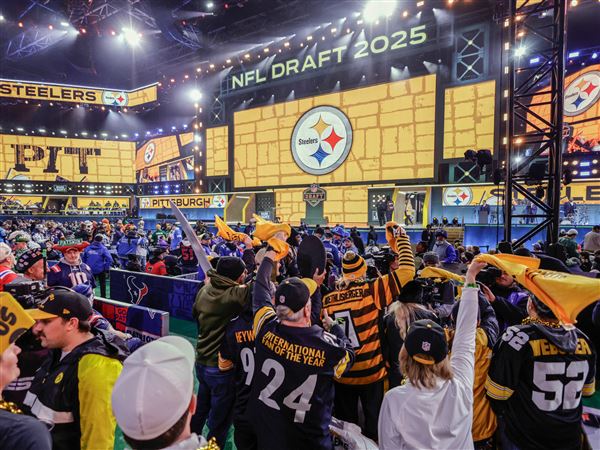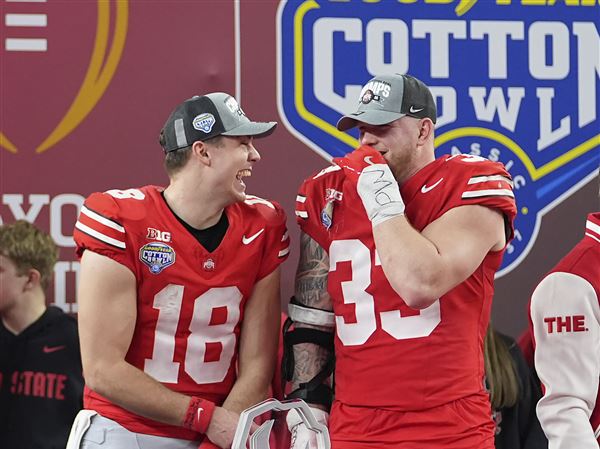JACOB’S CREEK, Pa. — On a crisp Dec. 6 116 years ago, two or three hundred miners chose to forgo a day’s wages at the Darr Mine here in Westmoreland County to attend a divine liturgy in honor of the Feast of St. Nicholas. Immigrants from all across Europe whose devotion to a saint known for caring for the poor were spared certain death that day, when 239 of their fellow miners perished in an explosion while they were in church. The explosion killed everyone in the mine.
Who was St. Nicholas and how did he become Santa Claus?
Friend to the sick and suffering
Born in 270 AD to wealthy parents who died when he was very young, Nicholas used his inheritance to attend to the needy, the sick, and the suffering, explained David Zubik, bishop of the Catholic diocese of Pittsburgh. “He devoted his life to serving God.”
As the story goes, Nicholas helped a poor father with three daughters who did not have enough money for their marriage dowries.
“That meant they would be sold into slavery,” said Bishop Zubik. “When Nicholas heard of their plight, he came by their home late one night and threw bags of gold coins into their window to help the daughters. The gold landed in their shoes drying by the fireplace, leading to the tradition of children leaving shoes out for St. Nicholas to fill.”
University of Pittsburgh Professor Benjamin Brand, a German studies professor and expert on folklore, says that for hundreds of years — perhaps more than a thousand — St. Nicholas has served as both a religious symbol of hope and an endearing character in folklore. The folklore began in Central Europe, depicting him as a hero who places treats in the shoes that are left outside the front doors of the homes of well-behaved children.
The reason the St. Nicholas story endures, Mr. Brand said, is his life. “A good folk tale has to meet three functions, with the most important part that it has to entertain.” If it is not entertaining, the story isn’t repeated. “The other two functions are to teach a lesson, to inculcate cultural values, and then of course the act of coming together to hear a story, which of course, especially in oral culture, is important.”
So the story of St. Nicholas entertains, teaches cultural values — in his case generosity and care for those in need — and creates community. In St. Nicholas’s case, the communities it helped create span almost all of Europe and large chunks of the United States, especially in towns and cities in the Great Lakes Mid-West and Appalachia where many of the immigrants who settled in these regions in the 19th and 20th centuries brought their traditions and stories with them from the Old Country.
Outside of Mary, Bishop Zubik said, St. Nicholas holds the distinction of being the next most common object of artists, either in terms of paintings or statuary. “The number of churches, chapels, religious institutions and altars dedicated to him throughout the world would be difficult to count there are so many.” He is the patron saint of Russia, Greece, Germany and countless cities and regions throughout the Christian world.
Nicholas into Santa
But St. Nicholas is not Santa Claus. In modern culture, St. Nicholas and Santa Claus are often intertwined and treated as the same person, Mr. Brand noted, but it is important to understand they are very different figures whose history is a bit of ancient religious drama.
“For the longest time, St. Nicholas Day was a major holiday, especially in German-speaking countries, to give children presents. Christmas, at that time, would only be celebrated in church,” he said. It wasn’t until the Reformation and Martin Luther that Christmas began to acquire the gifting element.
Luther — who, as a Protestant, was not a huge fan of the Catholic Church’s reverence for saints — “tried to diminish or undermine the popularity of St. Nicholas Day by introducing the Christkindl, Christ child, who would bring the presents on Christmas Day.”
So the Protestants created “Weihnachtsmann,” the “Christmas man.” They used the imagery of St. Nicholas — a man in a reddish brown winter coat — except the coat is redder, furrier and turns into something that looks closer to what you would find on a Coca-Cola truck later on in the 20th Century.
Some people still give children gifts on St. Nicholas day, Mr. Brand said. But Luther was successful. The main family holiday in Germany that revolves also around gift-giving is now Christmas.
But not everywhere, Brand points out. St. Nicholas Day in the Netherlands remains a bigger day than Christmas there. “Which is fascinating because, of course, the Netherlands also famously is Protestant. So, you see how people choose to celebrate the holidays they want to celebrate, no matter what the folks that run the churches say.”
Here in Western Pennsylvania, because of the dramatic influx of European immigrants who streamed into the city to work in the mills and factories in the 19th Century, the Feast of St. Nicholas is celebrated with mass at multiple churches. as well as in taverns. Penn Brewery, located in the city’s historic German neighborhood of Deutschtown holds a St. Nicholas Night filled with live music, a visit from a true version of St. Nick and the unveiling of their much-anticipated “Brewers Reserve of the St. Nikolaus Boch.”
Surprising Krampus
A good folk tale includes suspense, Mr. Brand said. “So Dec. 6 isn’t just reserved to celebrate St. Nicholas. There is a counterpart to St. Nicholas known as Krampus, who is meant to instill fear into children, so they’ll behave.”
Krampus is a throw-back, he said, to roots of Christmas celebrations: as Christianity started to spread throughout Europe, the church borrowed portions of pagan festivals and remade them to resonate in a more uplifting way.
“If you actively engage in the research of folk tales, you can really find worlds that don’t exist anymore,” he explained.
“However, if you switch on your brain, so to speak, and ask yourself what is actually happening here, it really opens up a door to the past.”
Some of the elements of these tales are so old that we don’t exactly know when they were told the first time. St. Nicholas is a good example.
“Some of the tales, the legends that have been told about Saint Nicholas are over a thousand years old. That we still celebrate them is something to be admired.”
North Side native Salena Zito is a national political reporter for The Washington Examiner, a New York Post columnist and co-author of “The Great Revolt: Inside the Populist Coalition Reshaping American Politics”: zito.salena@gmail.com.
First Published: December 3, 2023, 10:30 a.m.
Updated: December 3, 2023, 10:54 p.m.
















